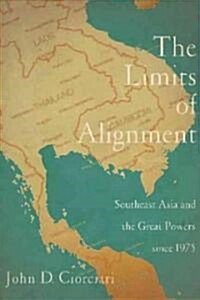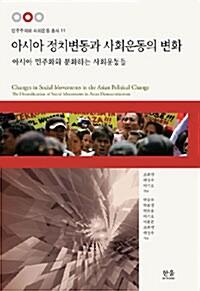
단행본
(The) limits of alignment: Southeast Asia and the great powers since 1975
- 발행사항
- Washington, D.C.: Georgetown University Press, 2010
- 형태사항
- xii, 320 p. : ill., map ; 23cm
- ISBN
- 9781589016965
- 청구기호
- 340.91 C576l
- 서지주기
- Includes bibliographical references and indexes
- 내용주기
- The appeal of limited alignments -- Later stages of the Cold War -- The post-Cold War era -- Maritime Southeast Asia -- The mainland peninsula -- The prevalence of limited alignments today -- Key findings and implications
소장정보
| 위치 | 등록번호 | 청구기호 / 출력 | 상태 | 반납예정일 |
|---|---|---|---|---|
이용 가능 (1) | ||||
| 1자료실 | 00013843 | 대출가능 | - | |
이용 가능 (1)
- 등록번호
- 00013843
- 상태/반납예정일
- 대출가능
- -
- 위치/청구기호(출력)
- 1자료실
책 소개
"By empirically demonstrating the ubiquity of limited alignment by Southeast Asian states since 1975, John Ciorciari usefully redirects our attention toward complexly contingent engagement as normal behavior in international relations. His argument is timely too, in that it showcases responses to uncertainty---a prominent current and likely future condition of (in)security in world affairs."---Donald K. Emmerson, director, Southeast Asia Forum, Stanford University"[This] book challenges conventional wisdom about the alignment behavior of developing countries. Based on a systematic and superb analysis...an important contribution to international relations theory and Southeast Asian studies."---Yuen Foong Khong, professor of international relations and John G. Winant University Lecturer, Nuffield College, Oxford UniversityThe Limits of Alignment is an engaging and accessible study that explores how small states and middle powers of Southeast Asia ensure their security in a world where they are over-shadowed by greater powers. John D. Ciorciari challenges a central concept in international relations theory---that states respond to insecurity by either balancing against their principal foes, "bandwagoning" with them, or declaring themselves neutral. Instead, he shows that developing countries prefer limited alignments that steer between strict neutrality and formal alliances to obtain the fruits of security cooperation without the perils of undue dependency.Ciorciari also shows how structural and normative shifts following the end of the Cold War and the advent of U.S. primacy have increased the prevalence of limited alignments in the developing world and that these can often place constraints on U.S. foreign policy. Finally, he discusses how limited alignments in the developing world may affect the future course of international security as China and other rising powers gather influence on the world stage.
목차
The appeal of limited alignments -- Later stages of the Cold War -- The post-Cold War era -- Maritime Southeast Asia -- The mainland peninsula -- The prevalence of limited alignments today -- Key findings and implications.


